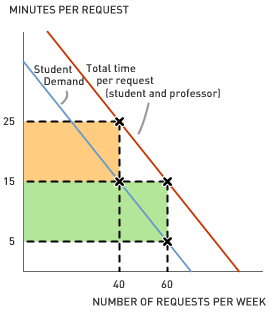L.A.'s Four-Stroke Solution
by Brandon FullerYour neighbor--the one whose social status is tied up in his lawn--hires an army of landscapers every couple of weeks to preen and primp his precious turf. The landscapers arrive with an arsenal of gas powered implements, including leaf blowers, and get to work. Your neighbor gets a nice lawn, the landscaper gets a check, and everyone else in the neighborhood gets a bountiful dose of noise and air pollution. The raging, spewing yard machines confers benefits to both your neighbor and the landscaper but impose costs on people in the surrounding area--costs for which nobody receives compensation. Neither the landscaper nor your neighbor take the external costs of air and noise pollution into account when dispensing or buying lawn care services. Economists view the unaccounted-for-costs as inefficient--when landscapers and home owners do not pay external pollution costs, too many gasoline intensive lawn makeovers will take place.
A bit of prudent government intervention can reduce leaf blower externalities. But how? Read this New York Times article to find out how an air quality agency in Los Angeles approaches the problem.
1. What incentive does the program provide for owners of leaf blowers with dirtier two-stroke engines to obtain cleaner blowers with four-stroke engines? What type of leaf blower user does the program target?
2. How much pollution can a single two-stroke blower emit each year? How many two-stroke leaf blowers are there in the L.A. area?
3. Why might a ban on leaf blowers create more costs than the current externalities? Can you think of alternative policies that would encourage landscapers to buy cleaner leaf blowers? A tax? A system of tradable emissions permits among landscapers?
4. Gas powered yard work generates some negative externalities. But a well maintained yard also confers positive externalities. When neighbors walk by lush lawns, trees, and flowers they benefit from the pleasant experience without paying for it. Better yet, when your neighbor keeps a nice yard, he makes living close by more desirable. As a result, he inadvertently adds a few dollars to the value of your home--much more so than if the only things he planted in his yard were a rusted Chevy and empty beer cans.
Leaf blower and lawn mower trade-ins aim to reduce negative externalities. Might the programs cancel out the positive externalities associated with well-maintained yards?
Topics: Negative externality, Corrective policy, Positive externality





